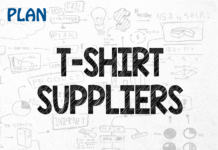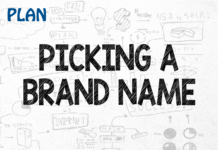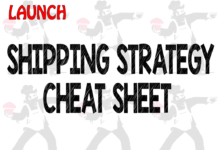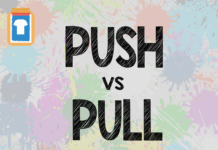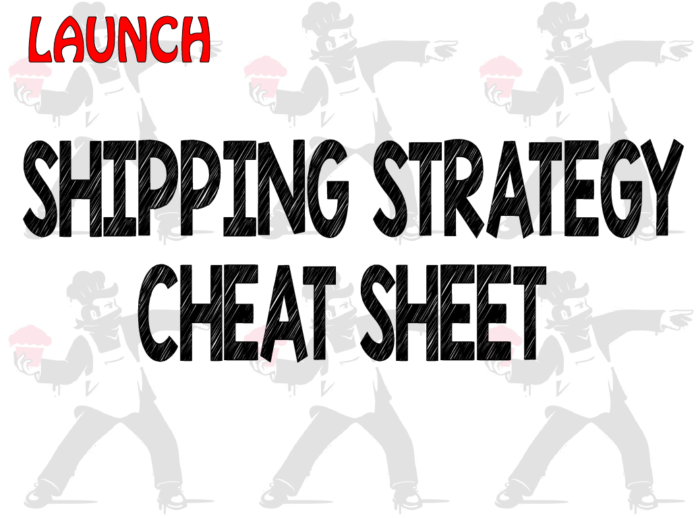If you’re not drop shipping or big enough to utilize a fulfillment warehouse, you’ll likely be shipping your packages yourself when you first start your e-commerce business. However, figuring out your shipping strategy and how you’re going to get your packages to your customers can be a daunting process. With dozens of variables to consider, where should you begin?
This post will take you through all the major variables that you need to consider when shipping your packages so that you can get you product into your customer’s hands in a way that impresses them while keeping your business profitable.
Your Shipping Strategy Will Change
It’s important to keep in mind that your shipping strategy will change over time. This can include changes to your packaging materials, your unboxing experience, your method for labeling your packages, how you charge customers, or even the shipping carriers you use. What’s important is determining a start point and adapting as you go, either for a better customer experience, greater profitability, or increased efficiency.
When I first started, I wanted to move quick. Because of that, I kept my labeling extremely simple, I literally wrote the addresses by hand on every order. While it bugged me because it looked amateur, it did allow me to get started really quick. As orders came in, I opted to print my return address on stickers. This helped create a more professional and clean experience while reducing the time it took to prepare each order. Finally, I purchased a label printer to print postage and shipping addresses with just a few clicks, further creating a cleaner and more professional customer experience, while also increasing efficiency and decreasing my postage costs.
Branded Unboxing Experience
One of the first things you’ll want to first consider is what type of experience you’ll want to deliver to your customers. A branded unboxing experience fuels anticipation and gets customer’s even more excited to open your package. This can have a massive impact on your brand, however, it comes at a cost, from both a financial and efficiency perspective.
Just how important is a great customer unboxing experience? Well, according to Google, unboxing videos have gotten 57% more views since last year and uploads of unboxing videos have grown over 50%. It’s not just YouTube though. Search on Instagram for brands like Porter or TrunkClub and you’ll find thousands of people sharing images of their purchased package and unboxing experience.
Deciding upfront the experience you want your customers to have when opening your package can better help guide your decisions for the rest of your shipping strategy.
Below, you can see how the creatives at Nerds Clothing package their shirts. They want to create an experience by bringing you back to your childhood, Nintendo! So before you even see the shirt they are already creating excitement and an experience.

Understanding Shipping Variables
To begin defining your shipping strategy you’ll need to understand all the variables when it comes to shipping a package. Each one of these factors can not only have impact your customers’ experience but also your profitability, so it’s important to consider each one carefully.
All shipping couriers base their shipping rates on a variety of factors and variables including:
- Package Size/Package Weight
- Departing Destination/Final Destination
- Insurance & Tracking
- Customs & Duties
- Business Account Rates/Discounts
Calculating Shipping Rates on Size & Weight
 One of the main determining factors to the cost of shipping is your package size and weight. You’ll want to carefully choose your packaging to make sure it’s big enough to hold your products while not being excessively big that it inflates your shipping costs.
One of the main determining factors to the cost of shipping is your package size and weight. You’ll want to carefully choose your packaging to make sure it’s big enough to hold your products while not being excessively big that it inflates your shipping costs.
To reduce shipping costs, you may want to consider stocking 2-3 different sizes of packaging so that you can select the most appropriate one for each order.
Below is a list of shipping calculators to some of the most popular shipping couriers. Before purchasing any packaging, you should see how their size affects shipping costs with the carrier you plan on using.
- USPS – Shipping Calculator
- Canada Post – Shipping Calculator
- FedEx – Shipping Calculator
- UPS – Shipping Calculator
- DHL – Shipping Calculator
- UK Royal Mail – Shipping Calculator
- Australia Post – Shipping Calculator
Calculating Shipping Rates Departing Location & Destination
Besides the size and weight of the package, the departing location and destination also are a major cost factor. There isn’t much you can likely do here, however, it’s important to keep this in mind if and when you grow big enough to use a fulfillment warehouse.
Insurance & Tracking
![]() Insurance and tracking are two very important considerations and depending on what you sell, may be an integral part of your shipping strategy.
Insurance and tracking are two very important considerations and depending on what you sell, may be an integral part of your shipping strategy.
Tracking almost always comes at some additional cost through upgraded shipping and can be important for not only proving you sent the package, but also for the customer experience. Many customers expect some level of tracking, which helps add to the anticipation of getting and opening their package.
Insurance will many times be included, but may only cover your merchandise up to a certain amount (usually around $100). If you’re shipping higher value items, you may want to purchase additional insurance to make sure you’re covered. This can be done on a case by case basis when you have concerns about a particular location or customer. If your regularly ship high value items or items that are easy to break or be damaged in shipping, you may want to consider using a 3rd party insurance provider that will cover all your packages automatically. For 3rd party package insurance providers, check out ShipSurance and Insurship.
Customs & Duties

One of the biggest challenges you’ll face as a retailer selling across international borders is dealing with customs and duties. It’s hard to know as a retailer what extra fees your products will be subjected to from each country. Customs and duties always creates a level of uncertainty for both parties.
Pitney Bowes has a really great Duty Calculator that can help you figure out exactly how your products will be taxed when crossing into other countries. They also have some really great country specific resource guides that can help you prepare to go international. Simply input your country, the country the parcel is going, the product type and value and this calculator will tell you how much your customers will have to pay in duties.
CUSTOMS & DUTIES DECLARATION INFORMATION
For more information on customs declaration and the required forms and policies, please see the resources below:
- USPS Customs & Duties Information
- Canada Post Customs & Duties Information
- FedEx Customs & Duties Information
- UPS Customs & Duties Information
- DHL Customs & Duties Information
- UK Royal Mail Customs & Duties Information
- Australia Post Customs & Duties Information
Business Accounts
Each carrier has some type of business account program. Business accounts offer better management of your orders, free shipping supplies, discounts on shipping, or some combination of those elements.
Here’s a list of links to the most popular carrier business account programs:
- USPS Business Gateway
- Canada Post Venture One
- FedEx Business Center
- UPS Business Solutions
- DHL Business Account
- UK Royal Mail Online Business Account
- Australia Post Business Credit Account
What Is The Cheapest Way To Ship?
There’s no perfect answer to the question “What is the cheapest shipping method?” since there are so many variables involved. However, you should keep the following in mind:
Each carrier has strengths and weaknesses and are better positioned to help different people.
The USPS and Canada Post are better and more efficient at moving small packages, letters and flat packages. They are also much better than private courier services at delivering to residential, which is many times referred to at the last mile.
Private carriers like DHL, FedEx and UPS have built their businesses and efficiency on moving larger and heavier packages. However, they are less efficient and therefore more expensive to deliver to residences versus businesses.
The best way to determine your cheapest shipping method is to experiment with the various shipping courier calculators, and always select the type of destination that pertains to your business (i.e. residential delivery vs. business delivery), and to test multiple destination locations, including the same city as you, across the country from you and common international locations.
Packaging & Packaging Resources
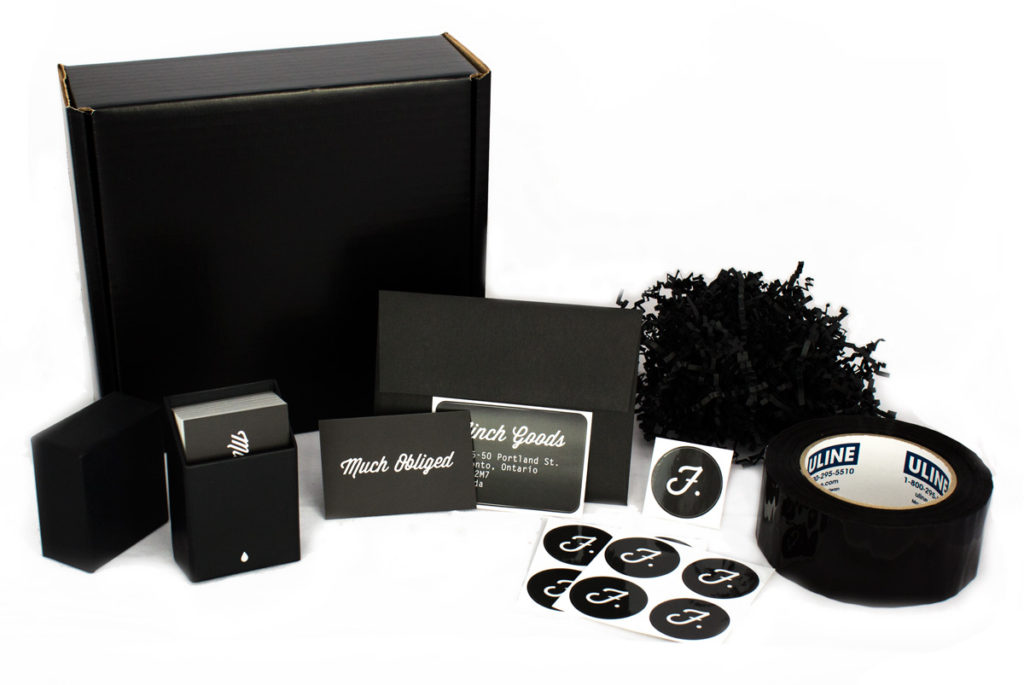 Your packaging is extremely important. As mentioned in the beginning of this post, it’s a major determining factor in the cost of shipping, but it also can enhance or detract from the overall customer experience. Choosing your packaging materials carefully can ensure you provide a great experience for your customers that they will want to share, while also keeping you profitable.
Your packaging is extremely important. As mentioned in the beginning of this post, it’s a major determining factor in the cost of shipping, but it also can enhance or detract from the overall customer experience. Choosing your packaging materials carefully can ensure you provide a great experience for your customers that they will want to share, while also keeping you profitable.
Below, I have listed out some of the best places to get both inexpensive packaging material, as well as higher end, custom packaging at the best price.
Standard Shipping Boxes
Custom/Unique Shipping Boxes
- Pakible (Quantities as low as 10)
- Packlane (Quantities as low as 10)
- Uline – Colored Boxes (What I use for my black boxes)
- Box Geek
- Yebo Custom Boxes And Packaging
- InstaBox (Canadian Based)
PACKAGING TAPE
You’ll need to seal your packages somehow, and usually that means packaging tape. While the most popular option is traditional clear packaging tape, there are some colored varieties that you can purchase if it suits your brand.
Here’s links to several popular and inexpensive places to pick up your packaging tape:
ENVELOPES
While not necessary for most merchants, envelopes provide a more elegant want to present a receipt or thank you note for your customers, as oppose to just throwing it loosely in a big box.
Here’s links to two popular online stores to purchase a wide variety of envelope sizes and styles:
CUSHIONING & PROTECTION
Most merchants will need to utilize some form of product protection to keep their merchandise from getting bumped and broken. This can be anything from foam packing peanuts, colored crinkle paper, newspaper/tissue paper, or bubble wrap.
Check out these links to a wide variety of protective material for your packaging:
PACKAGING STICKERS
Stickers are insanely useful when it comes to packaging. As I mentioned in the beginning of this post, I used them to print out branded return address labels for my packages. I also use the round circle stickers (above) to seal the package and envelope inside.
Here are some links to my favorite sticker printers:
CARRIER PACKAGING BEST PRACTICES
As a cautionary note, you should browse the best practices for packaging set out by each carrier to make sure your packaging is in line with any rules, regulations and suggestions of your chosen carrier.
- USPS Domestic – Packaging Best Practices
- USPS International – Packaging Best Practices
- Canada Post – Packaging Best Practices
- UK Royal Mail – Packaging Best Practices
- Australia Post – Packaging Best Practices
- FedEx – Packaging Best Practices
- UPS – Packaging Best Practices
- DHL – Packaging Best Practices
Label/Postage Printing
Labeling can be time consuming so you’ll want to think about how you’re going to label and print postage for each package. Starting out, you can write the shipping address and return address right on the package. This can be a quick way to get started, however, it is also time consuming once you start shipping orders regularly.
Many e-commerce platforms can help with this by allowing you to print shipping addresses right from your order summary page that you can then stick onto your package with packing tape. Alternatively, you can also opt for label stickers available from any office store, which makes your presentation a little cleaner.
LABEL AND POSTAGE PRINTING APPS
As you begin getting more and more orders, you’ll want to further streamline your shipping process as much as possible. That means at some point you’ll want to start printing your postage.
In order to print postage from your home/office, you’ll need the help of a shipping label printing app. These apps can connect to your store to automatically download all your orders, as well as to your favorite shipping carrier to print out your shipping labels/postage in just a few clicks.
Here’s some of the most popular services for printing your shipping labels/postage:
- Stamps.com – 15.99/month + postage
- Shippo – $0.05 per label + postage
- Shipstation – $25-$145 + postage
- ShippingEasy – Free-$99/month + postage (Free for up to 50 packages per month)
LABEL PRINTING HARDWARE
As you grow, you can look at dedicated hardware to print shipping and postage labels for your orders like this popular label printer along with a digital scale to weight your packages, like this one from Amazon. This will allow you to print labels on standard 4×6 sticker labels that can be stuck directly on your package instead of printing on 8 1/2 x 11 sheets of paper, folding it in half and sticking it on your package with packaging tape.
Conclusion
Getting your packages from point A to point B shouldn’t be that difficult. Unfortunately, with the number of variables involved in shipping, the shipping strategy you choose will rarely be perfect the first time. Rather, your shipping strategy should be an ongoing process that you constantly evaluate to make sure you’re delivering the best possible experience to customers, while maintaining profitability and efficiency for your business.


